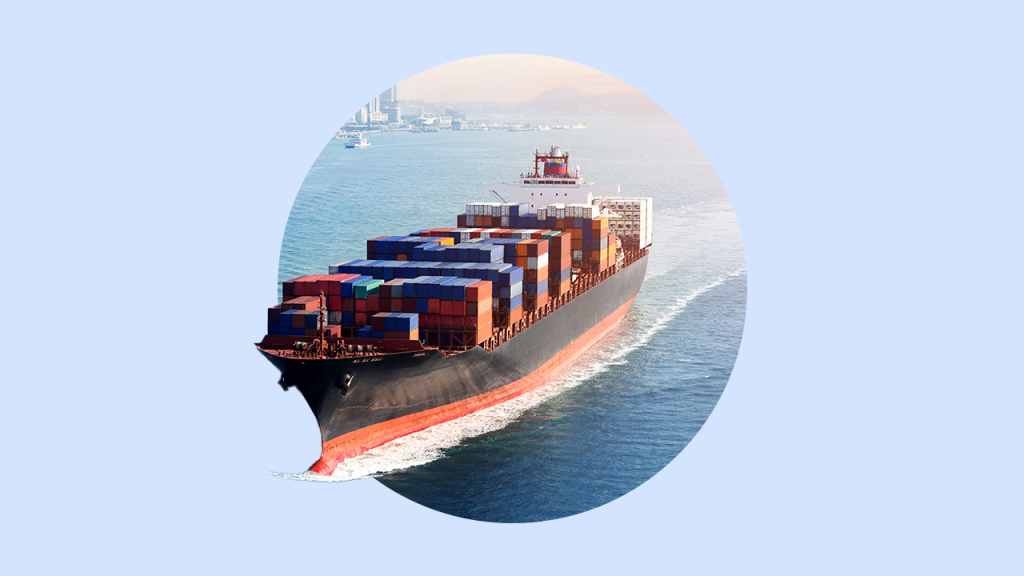Key takeaways
-
Tariffs are a tax imposed on goods that the U.S. imports from other nations. - President-elect Donald Trump has shown a penchant for tariffs in his economic policy agenda. In his first term, he imposed duties on $380 billion worth of products from major U.S. trade partners, aimed at safeguarding local industries and generating income for the government.
- Economists, supply chain analysts and tax experts interviewed by Bankrate said that consumers often end up bearing the burden of tariffs, as companies pass along higher production costs to consumers.
No economist, business or consumer knows for sure which policies President-elect Donald Trump will enact during his second term — but there’s a good chance tariffs will be in the mix.
Taxing the goods that the U.S. imports from other countries has been a staple of Trump’s economic agenda. He’s referred to himself as the next “tariff man” and called tariffs the “most beautiful word in the dictionary.” When he was the nation’s 45th president, he slapped higher levies on roughly $380 billion worth of products from some of the largest U.S. trading partners. Ahead of his second term, he campaigned on creating a universal baseline tariff and charging additional levies on goods from China, Mexico and Canada.
Trump has likened tariffs to creating a protective “ring around the U.S. economy,” believing they could bring jobs back to communities hurt by globalization. He’s also expressed an interest in making tariffs a bigger source of revenue for the federal government, moving away from the income tax system that’s prevailed since the early 1900s. (He also recently said he plans to create an External Revenue Service to collect revenue from foreign sources.)
But tax professionals, supply chain analysts, trade lawyers and economists interviewed by Bankrate say that tariffs haven’t been a reliable tool for either objective. Companies would likely require years, if not decades, to bring their operations back to the U.S., a process that could still end up being more expensive, experts say. In the meantime, research has shown that consumers end up footing the bill, as companies pass along higher tariffs through price hikes.
“One of the few things that most economists unanimously agree on is trade is good,” says Michael Coon, an associate professor at the University of Tampa who specializes in international economics. “If you implement a world that’s super protectionist by putting in a lot of tariffs, it’s going to raise prices on consumers and effectively make everybody poorer.”
Here’s everything you need to know about tariffs, including how they work, how they could impact the U.S. economy and what they mean for your personal finances.
A timeline of Trump’s tariff proposals
Trump presented various tariff proposals while campaigning for office. Those include:
-
- Gradually increasing tariffs by 2% to 5% a month (Bloomberg, Jan. 13, 2025)
- Implementing additional 25% tariffs on imports from Mexico and Canada and an extra 10% on goods from China (Truth Social post, Nov. 25, 2024)
- Instituting a 10% to 20% tariff on all U.S. imports (Campaign rally, Aug. 18, 2024)
- Imposing 60% levies on goods coming from China (Fox Business interview, Feb. 4, 2024)
- Imposing a 10% tariff on all U.S. imports (Fox Business interview, Aug. 14, 2023)
What are tariffs, and how do they work?
Simply put, a tariff is a fancy name for a tax — just like property taxes or sales taxes. Instead of applying to real estate or goods and services, though, tariffs apply to U.S. imports.
The U.S. imports trillions of dollars worth of goods every year. Often, it’s companies and manufacturers who are ordering those products from abroad, intending to either sell them or incorporate them as a component in another finished product. But if they buy an item that has a tariff, they are responsible for giving Uncle Sam its funds. For example, if the U.S. imposes a tariff on goods imported from China, that tariff is paid by the U.S. firms that buy those goods.
Why would the government choose to impose tariffs? Often, import tariffs are intended to shift consumption away from specific countries. The goal is to protect domestic industries, boost local employment or to punish the other country for its trade practices.
Most commonly, tariffs are charged as a fixed percentage (such as 25 percent or 10 percent) of an item’s value. That was the case during Trump’s first term, when he enacted sweeping tariffs on products ranging from steel and aluminum to solar panels and washing machines. Other types of import taxes include “tariff rate quotas,” where levies kick in after importing a specific threshold. Currently, the Biden administration is using a quota system on steel and aluminum imports from the United Kingdom, Japan and the European Union.
Who pays for tariffs?
Contrary to how it might sound when policymakers say they’re imposing tariffs on foreign trading partners, it’s not the country that’s exporting the goods to the U.S. that pays the tariff — but the company that’s ordering that import.
It’s easier to understand in practice. Say you bring back a few cases of Chianti Classico from your vacation in Italy. When you declare those items to customs, you’re the one who’s charged import duties, not the vineyard in Tuscany, with whom you settled up when you paid for the wine.
Hundreds of years ago, traders who traveled from country to country selling exports were the ones chalking up taxes at the port, Coon says. Today, most business is contracted ahead of time by companies who know how much of a product they need to order from a factory abroad.
“The technical answer to who pays for tariffs is the importer of record,” says Tony Gulotta, principal and practice leader of the national tax team at Ryan. “The reality of it is, the ultimate consumer is going to bear the additional cost of the tariffs.”
How much do companies pass along to consumers?
When companies pay more for a product or an input, it’s only natural that they’ll turn around and ask more for it. The question, though, is how much. Industries with tighter profit margins — like food services or retail — might have no choice but to hike prices. Others who face steeper competition might be inclined to eat at least some of the higher price to drum up demand.
Some firms, meanwhile, might even raise prices on items that aren’t subject to a tariff to make up for losses in other areas, Coon says.
Tariffs in 2018 were completely passed through to the U.S. consumer, according to two separate research reports published by the National Bureau of Economic Research in 2019. Even when accounting for tariff revenue, the estimated real income loss in 2018 ranged from $6.9 billion to $7.2 billion.
Major U.S. companies such as Walmart, AutoZone and Lowe’s have already warned of price hikes if new tariffs take effect.
Companies face a choice of whether to absorb some or all of the cost of the increased taxes. Since publicly traded companies are beholden to shareholders, it’s reasonable to expect they’d prioritize profits and pass along the bulk of the increased costs to consumers or businesses purchasing their goods.
— Mark Hamrick, Bankrate senior economic analyst
Trump’s tariffs from his first term increased consumer prices in the furniture and kitchen cabinet sector by 7.1 percent, the corner of the economy that saw the biggest surge in prices, according to independent research from the U.S. International Trade Commission in 2021. Motor vehicle parts, meanwhile, rose 2.3 percent.
Who benefits from tariffs?
A benefactor from tariffs is the federal government, because they create an extra revenue stream.
The Trump administration collected $89.1 billion in tariffs, according to estimates from the Tax Foundation. The Biden administration — which maintained most of Trump’s levies and slapped additional ones on items from China — collected almost double that amount ($144.3 billion). Still, over the past 70 years, tariffs have never accounted for more than 2 percent of total federal revenue, according to the Congressional Research Service.
Earlier in the country’s founding, almost a third, or about 30 percent, of federal revenue came from tariffs, the Tax Foundation finds. Lower-income nations who might not be able to collect payroll taxes as easily tend to deploy more tariffs than higher-income nations, according to the World Bank.
“Primarily, they were easy to collect,” Coon says. “All you had to do is open up an office at the port and say, ‘What are you bringing in? Here’s what you have to pay me.’”
Reverting back to that strategy today might be tricky, Coon says. For starters, the U.S. imported $3.1 trillion worth of goods in 2023, according to the U.S. Commerce Department. The federal government spent $6.75 trillion in fiscal year 2024. Imports would also likely fall as companies purchase fewer products from other countries.
Meanwhile, retaliatory tariffs from other countries can simultaneously weigh on a country’s exports. All of those factors combined could harm economic growth. Tariffs from both the Biden and Trump administrations have cut an estimated 0.2 percent from the U.S. economy’s total output, according to the Tax Foundation.
Who has the power to authorize tariffs?
Several statutes dating back to the early 1930s grant the executive branch the authority to strike trade deals and raise tariffs without Congressional approval to maintain national security, according to Ashley Craig, a Washington, D.C.-based partner at Venable who works with clients on navigating trade and supply chain regulations. That includes cases when a country looks to have some unfair trading practices or when imported goods look like they’re harming U.S. industries.
Many of Craig’s clients have been making contingency plans for a Trump presidency since the early spring, long before he was elected, he says. Also, Craig has started to look into the legal basis for unilaterally implementing tariffs on all U.S. imports — and whether it can be challenged.
“The short answer is: Maybe,” he says, noting that it depends on which statute Trump uses to defend his trade policy decisions.
Legal battles could be long and drawn out. Some D.C.-based appellate courts are still hearing oral arguments about some of Trump’s first-term tariffs, he says.
“At some point, hopefully in the future, we’ll have certainty, but it will not happen anytime soon,” Craig says. “In the meantime, importers will have to pay the duties as they have been.”
Do tariffs work?
Policymakers and economists who support tariffs see it as a strategy for generating jobs or revitalizing hard-hit manufacturing sectors. That’s because tariffs penalize companies who work with those foreign countries — and those extra costs might incentivize them to take their business elsewhere.
Meanwhile, a foreign economy that relies on doing business with its trading partners might be inclined to lower prices — effectively taking on some of the cost of the tariff.
“There is a path by which these policies can be implemented without material adverse consequences, but it is narrow,” wrote Stephen Miran, a senior strategist at Hudson Bay Capital, before Trump tapped him to lead the Council of Economic Advisors.
Job growth in the primary metal manufacturing sector — which includes steel and aluminum production — hit a six-year high in 2018, Labor Department data shows.
Other industries, however, suffered. That year, Ford and General Motors announced that those tariffs had cost them an additional $1 billion, or $700 a vehicle. By 2019, motor vehicles and parts manufacturing jobs had declined for the first time since the Great Recession, according to Labor Department data. Meanwhile, China’s retaliatory tariffs on U.S. agricultural exports led Trump to issue $20 billion in subsidies.
“If you look at how much consumers end up paying extra for the protected products relative to the number of jobs being saved, it’s somewhere around $200,000 per job in agriculture per year,” Coon says. “In the steel industry, it’s closer to $1 million per job per year in higher prices. If that’s the concern, it would be cheaper to pay the unemployed people to stay home.”
Craig says he didn’t witness a massive restructuring in operations among his clients after Trump’s first-term tariffs. None came back to the mainland U.S., while only a few ended up moving their operations to other countries throughout Southeast Asia, such as Vietnam, Malaysia and Thailand.
How could Trump’s tariff hikes impact consumers?
Every economist in Bankrate’s fourth-quarter Economic Indicator Poll warned that tariffs could lead to higher prices — adding to challenges that many Americans are already facing from post-pandemic inflation. How much prices could rise, however, depends on how many tariffs the Trump administration imposes.
Currently, 32 percent of total U.S. imports are subject to a tariff, according to research from Fitch Ratings. If Trump applies higher tariffs only to the items that currently have levies, consumers might witness a 30-40 basis point increase in inflation, says Olu Sonola, the firm’s head of economic research. If universal tariffs on all imports are enacted, however, consumers might witness a larger 1-1.2 percentage point jump in inflation.
Prices rose 2.7 percent from a year ago, as of the most recent data from November, according to the Bureau of Labor Statistics.
Fitch’s economics team currently estimates that Trump will pursue the former tactic — applying higher tariffs only to items that are currently “dutiable” — rather than universal tariffs. They project that inflation will remain at 2.8 percent at the end of the year and the U.S. economy will grow a smaller 2.1 percent in 2025.
“A moderate tariff scenario will dent GDP and it will affect inflation,” Sonola says. “But the U.S. economy is doing quite well, and we expect that momentum to continue.”
Bottom line
Higher tariffs could bring some economic volatility in the year ahead — underscoring the importance of saving up for emergencies and shopping around for the best deals.
Trump has frequently revised his plans for tariffs throughout his presidential run, and economists say there’s still a chance they might be only a negotiation tactic.
With or without tariffs, though, policymakers may still be on the hook to find solutions for communities hit hard by offshoring, globalization and automation.
“We’re a different economy than we were 30 years ago, and we’ll be a different economy 30 years from now,” Coon says. “The real issue is not preventing change; it’s adapting to change. How we help people adjust to that transition is more important than resisting that transition.”
Read the full article here












